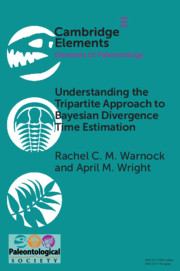Element contents
Understanding the Tripartite Approach to Bayesian Divergence Time Estimation
Published online by Cambridge University Press: 08 December 2020
Summary
Keywords
Information
- Type
- Element
- Information
- Series: Elements of PaleontologyOnline ISBN: 9781108954365Publisher: Cambridge University PressPrint publication: 04 February 2021
References
Accessibility standard: Unknown
Why this information is here
This section outlines the accessibility features of this content - including support for screen readers, full keyboard navigation and high-contrast display options. This may not be relevant for you.Accessibility Information
- 25
- Cited by
